INTRODUCTION
Air defense systems are a very important asset for every military. Without these things, an enemy can wreck havoc using its aircraft and missiles. When it comes to land based air defense systems, Russia has been the leader from the past few decades. They have Surface to Air Missile (SAM) systems in every shape and size for every possible terrain and scenario. Among them, the Pantsyr S1 stands out due to its unique combination of Anti-Aircraft (AA) guns and SAMs. This article examines the origins, capabilities and deployment of this power air defense system.
ORIGINS
The Pantsyr S1 traces its roots back to the 1970s and 80s when the US started to rely on AH-64 helicopters and A-10 attack aircraft to destroy Soviet armoured formations. These aircraft relied on pop-up and low level attacks to attack armoured vehicles and would be able to escape safely before the Soviet SAMs managed to get a lock on them. The need for a quick reaction AA system which could destroy such aerial threats with minimum response time was needed.
This resulted in the development of the Tungushka tracked AD system which used a combination of 2 x 30 mm AA guns and 8 SAMs to accompany Soviet tanks into the battlefield. This system negated the effectiveness of the USAF attack aircraft and was capable of shooting them down with ease. The Tungushka was mass produced for the Soviet army and had export success as well. The Pantsyr is in fact a heavily upgraded Tungushka with better missiles, electronics and mounted on a wheeled chassis.



FEATURES
Technically speaking, the Pantsyr S1 is classified as a SPAAG-M ( Self Propelled Anti-Aircraft Gun – Missile) since it is mounted on a self-propelled platform, the Kamaz 8×8 truck and has both guns and missiles to engage its targets. It provides the high altitude, long-range engagement capability of SAMs combined with low-altitude short-range engagement capability of AA guns. It has 6 SAMs and dual 30 mm autocannon on each side of the turret for a total of 12 missiles and 4 guns.
It has a Passive Electronically Scanning Array (PESA) S-band target acquisition radar which scans mechanically to provide 360º coverage and an X-band fire control radar (FCR). They can search and track aerial targets over 50 km away and engage them at a distance of 20 km. The FCR can track 20 targets and engage 3 simultaeously and up to 12 targets can be engaged in a minute. It has a very advanced electro-optical and Infrared detection and target engagement system as well.


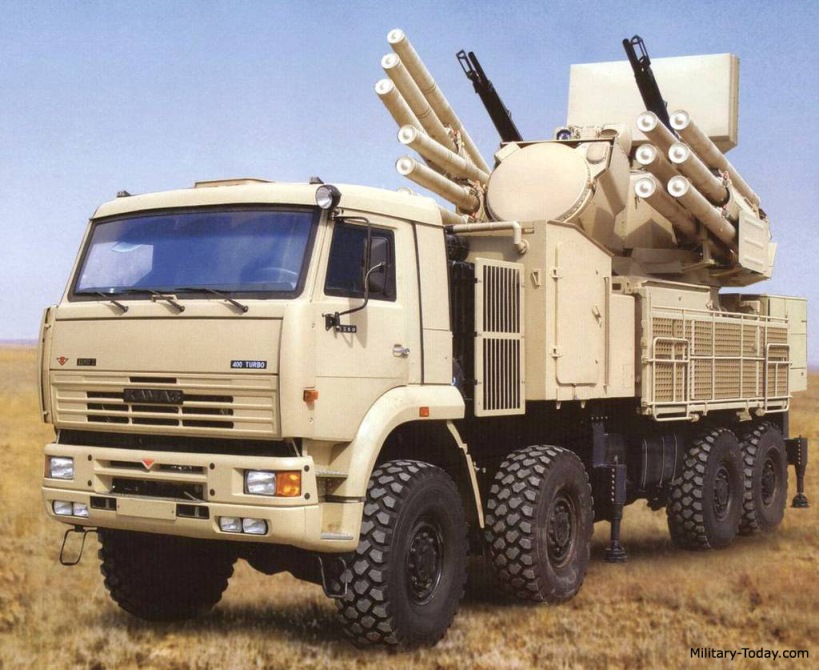
The 2 dual 30 mm guns can fire at a rate of 2500 rpm each for a combined rate of fire of 5000 rpm. Each gun has 750 rounds of high explosive (HE) fragmentation, tracer or armour-piercing (AP) ammunition for a total of 1500 rounds. The maximum engagement range of these guns is 4 km and can shoot down targets flying as low as a few meters. These guns also have the ability to engage surface targets up to 4 km with precision.
The 57E6 SAM is a two-stage solid rocket-propelled missile which has a range of 20 km. It travels at a speed of over Mach 2 and can engage targets up to an altitude of 15 km. The first stage booster provides initial acceleration and is separated after 2 seconds of flight. The second sustainer stage contains the warhead and guidance systems and is very agile. The warhead used is of the continuous rod type where the missile detonates near the target and releases a rapidly expanding cluster of metal rods which destroy the target with sheer kinetic energy. The missile is controlled using command guidance, which means that the fire control radar needs to continuously illuminate the target. In adverse jamming conditions, the passive IR and optical sensors can be used to guide the missile.



Recently, it was revealed that a naval variant of the Pantsyr is under development and will equip future Russian Navy warships. It will have 2 x 30 mm 6 barreled Gatling guns and 8 ready to fire SAMs. These SAMs can be reloaded from an under-deck magazine of 32 missiles. These systems will act as a combined gun-missile close in weapons system (CIWS) for defense against cruise missiles. The Gatling guns will have a combined rate of fire of over 10,000 rounds per minute fed by an under-deck magazine housing more than 4000 rounds. It may not have a target acquisition radar and depend on the ship’s primary radars for the purpose.
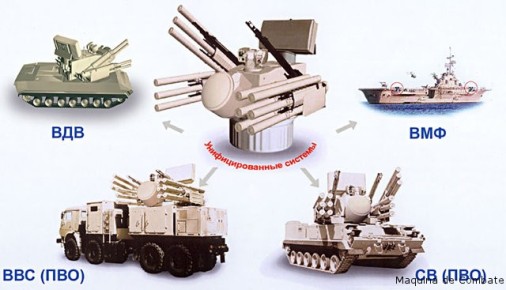
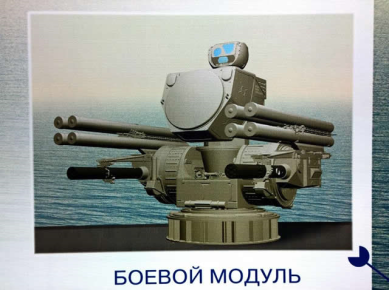
DEPLOYMENT
A typical Pantsyr battery consists of 6 firing units, control post, transporting-loading and maintenance vehicles. They can be supplemented by the 1RL-123E long range air search radar which can provide early warning to the entire battery. This radar can detect a 1 m² RCS target (fighter jets) at over 130 km and a 0.1 m² target (cruise missiles) at 30 km. A single battery can provide protection for stationary or moving assets of high value.
At present, Russia deploys a battery of Pantsyr S1 with every battery of S400 SAM systems to protect them from drone, anti-radiation missile (ARM) and precision guided munition (PGM) attacks. They are said to be capable of intercepting the latest western missiles and munitions like Taurus, Storm Shadow, JSOW and AGM-88 HARM. Each of these batteries can be networked to provide dense AD coverage against any hostile aircraft or missiles. The Pantsyr S1 can be deployed as a single autonomous unit as well, to provide point defense for assets like bridges and command centers. The tracked variants will be used to supplement Tungushkas in their armoured column protection duty.


![[IMG]](https://i0.wp.com/ic.pics.livejournal.com/dimmi_tomsk/12245911/91070/91070_900.jpg)
![[IMG]](https://i0.wp.com/ic.pics.livejournal.com/dimmi_tomsk/12245911/91179/91179_900.jpg)
Modified version of Pantsyr S1 is under development for the freezing temperatures and harsh conditions and terrain of the Arctic. Icing of machinery is the main problem which will be rectified. Russia will deploy multiple batteries of modified tracked variants of Pantsyr to defend their bases in the Arctic. The tracked variant will be widely deployed there due to its increased mobility compared to the wheeled variant.
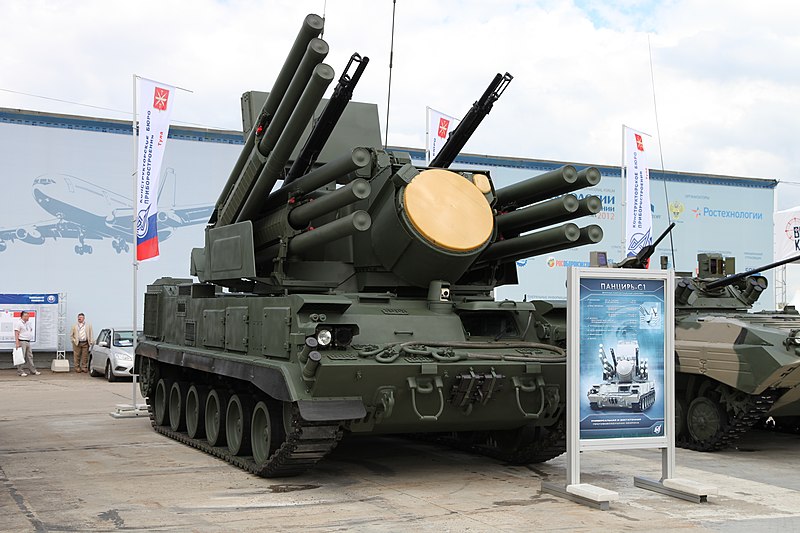
EXPORTS
The Pantsyr has great export potential and as of now 9 countries operate it. The UAE received 50 these systems mounted on German MAN 8×8 trucks. Syria, Iraq, Jordan have ordered 50, Algeria 38, Oman and Iran around 10 systems. Brazil is set to place on order for 18 systems to provide air defense at the 2016 Olympics. Countries like Vietnam and India are seen as potential operators.
You may also like : Schützenpanzer Puma : Germany’s deadly new Infantry Fighting Vehicle
Enjoyed reading the article ? Do rate it below.
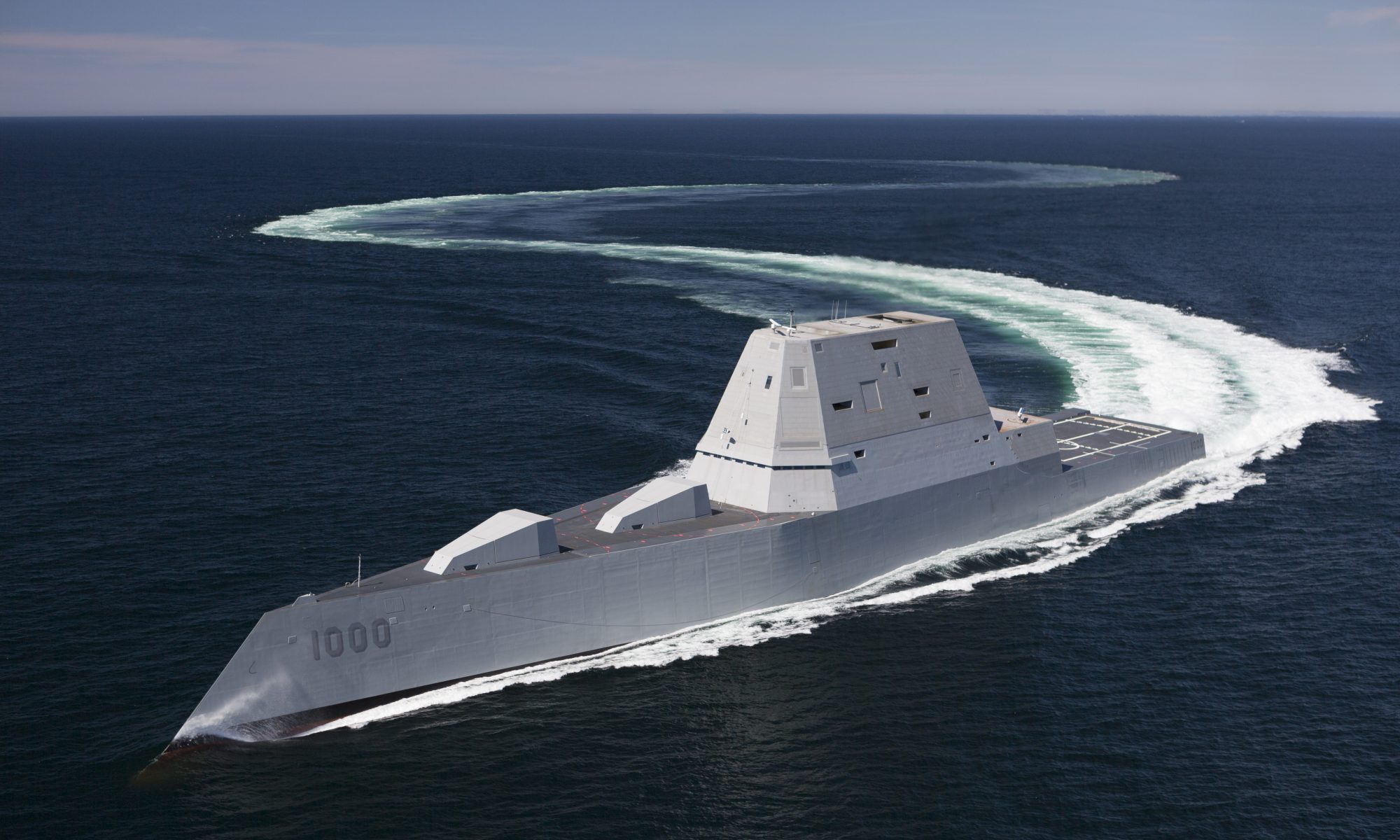

Is this a component of the S400 SAM or is it separate from the system?
LikeLike
It’s a separate system.
LikeLike
yh it is
LikeLike
S400 is a long range SAM while this one is a short range which protects convoy’s and installations from short range threats..
LikeLike
Entirely seperate system
LikeLike
It has 6 SAMs and dual 30 mm autocannon on each side of the turret for a total of 12 missiles and 4 guns.?????????????????
LikeLike
Yes.
LikeLike
very informative.why india has not opted yet?
LikeLike
Thank you. India already has 96 units of Tungushka , which will be upgraded further. Since they have the same features, India hasn’t opted for it. But they may go for it if they feel the requirement for such a system.
LikeLike
India won’t since INDIA has Akash which functions exactly like the same. It’s missiles also guided by ground radar and does not have radar homing head which makes it very cheap to operate once you have bought the system. Yes Akash does not have the gun but maybe they will have it later
LikeLike
Actually there’s a good chance of India buying it in the future. Akash is a predominant static and separate system with scattered elements. The Pantsyr is a mobile and fully integrated system on a single platform. Both have pretty operating methods. The missile of the Pantsyr is also radar guider and doesn’t have a seeker which makes it cheap. It’s also extremely compact.
LikeLike
How effective are defense systems really? I always feel it would be easy to saturate the defenses capacity and that armies should focus on preemptive kills.
The defenses can be very useful in escalations & provocations (or the single false alarms misiles) but how they would play out in a war?
LikeLike
Defenses would be extremely effective when used along with integrated radar networks and fighter jets. Standalone defense systems cam be saturated and overwhelmed in a war, but it’s extremely tough to do that to an integrated air defense system. The Russians have the tightest IADS and the Pantsyr is one small part of that.
LikeLike
Hi
A very informative article indeed. India needs this.
LikeLike
Hi,
the Pantsyr has in my opinion only just one weak point: The 30mm Machinecannons.
In my personal opinion for the given task the 30mm ammo is obsolete because it need a direct hit to shot down a target. If the target is a airplane is no problem but it is if the target is missile or a small drone it is one. I have seen on tv Pantsyr units shooting at very small drone targets, with the missile was no problem hitting them but the had big trouble hitting it with the cannons (The first 2 times the shoot at the target with the cannons and missing both times, at the 3rd time they fired a missile and the target was shooted down).
In my opinion it is waste to employ a expensive missile to shoot down such small targets, I think that the solution to this is replace the 30mm with bigger cannons (35mm, 40mm or even a 57mm) in order to fire ammo like the 35mm AHEAD or 40mm 3P. This ammo destruct itself in the near of the target with the result of a shotgun effect. With such ammo the system can shot down with a small burst and very high probability even the smallest targets. And so making it very cost effective.
If the Pantsyr has this kind of cannons and ammo then it becomes literally perfect for the given task.
Great blog, i love it. Keep the good work going!
LikeLike
Thanks for your comment. You point out a very valid weakness of the system. I myself have thought the same and the Pantsyr would be perfect if fitted with 35 mm cannons using air burst ammunition.
But one of the main reasons the cannon is still retained as it has a quicker reaction time when compared to missiles and it’s mainly used to engage slow mowing targets like helicopters, UAVs and also against ground targets.
LikeLike
I use Google translator. Sorry for any mistakes. You write very interesting articles.
But one of the main reasons for the gun is still there millions tons of Soviet ammo 30×165 mm. it’s the same for tens of thousands of helicopter guns, aircraft, IFVs, APCs and combat boats.
well-established and polished production of 30мм guns and ammunition
LikeLike
Hi NRP,
My comments are not related to this post but was keen to read some info on WMDs. Have you considered writing on it?
LikeLike
I generally don’t write about WMDs. It’s not my area of interest 🙂
LikeLike
India was seen as a potential buyer because Trishul missile failed but then India was quick to sign an agreement with Israel for developing LR-SAM. So India may not buy this.
LikeLike
Do india need pantsyr[Missile ] or can it rely on land based variant of Maitri SAM or Aakash SAM
LikeLike
Land based Maitri has been canceled. India will go for only naval Maitri. Akash SAM is enough to fulfill the needs in medium range category.
LikeLike
What of the comment by Indian Army and Air Force that it is not capable of defending the skies in India against the Chinese threat? Army has said that Akash doesn’t meets the requirements of Indian Army to be selected as a MR-SAM for Indian Army. Is that meant to be true?
LikeLike
I’m sure they’ve not commented anything like that officially. The Indian Forces are definitely capable of defending the skies.
The Indian army hasn’t said that as well. It was revealed to be a massive media twist on statements and wrong assumptions. Akash has been accepted by the Indian army in the Short Range SAM category. They will procure QR-SAM from Israel and the MR-SAM will be a version of the MR-SAM developed for the Indian air force.
LikeLike
God help these systems when an attacker uses stand-off jammers, escort jammers, aspjs, uavs, anti-radar missiles, along with talds. Ooooops. Not even gonna get into the the different types of jamming. I went to an eccm school, years ago. When we took our first break, we were all scared shitless. We would play wargames with multi-axis attacks and it was CRAZY.Sure, the attxking force took losses but, I would not want to be on defense.
LikeLiked by 1 person
An Pantisyr is NEVER alone, they are the escort to S-400, and to even come in range of an S-400 is an issue for most Missiles, especially Anti Radiation Missiles, and Jamming is pointless against missiles with Active Radar guidance, and every single Air defense unit in Russia have supporting ELINT and EW units, so the jammer will be counter jammed, ther will be face targets and shot and scoot tactic, and Pantisyr is the last defense.
SEAD against Russia is the most difficult thing an attacking military have on the to do list, its extremely hard, during Kosovo USA failed to gain Air Superiority against old Russian equipment, today USA still have the same equipment they did in Kosovo with a few exception, Russia do not…Nothing used in Kosovo are not even close to be in service in Russia…
Russia are world leader in Air defense and ECM and they are world leader in Counter SEAD tactic and equiptment for this.
Even if USA have the most powerful Air Force they are far from having Arial Superiority in a conflict with Russia.
LikeLike
I saw in an online video released by Pantsyr Manufacturing Firm that future S1 Pantsyr will have total of 18 missiles and guns on Tata 8×8 Trucks. It was a Russian released video as the description language was Russian and it had the same background as the one I saw in a video of Brahmos Aerospace. It had Russian flag on one side and Indian on other and a rotating S1 (which I described) in center so is that meant to be that India will get this system in future?
LikeLike
Russia is offering Panstsyr on Tata chassis to India. But India has not expressed any interest as of now.
LikeLike
Just a correction… its 4 guns… not 2…
tunguska also had 4 guns… 2 guns side by side in a pair….
LikeLike
1. Pantsir & Akash is not comparable.
2. Pantsir is mainly for low flying cruise missiles , drones , aircrafts.
3. Only comparable system is Kasthan.
4. Designed as the 5th layer of modern Russian Air defense system.
1st layer. 40N6 max. range 400km
2nd layer 48N6 max. range 250km
3rd layer 9M96E2 120km
4th layer 9M96E 40km
All are with S400
5th layer Pantsir / Kasthan
6th layer AK 630
5. Our next gen warships would need Pantsir as CIWS along side Barrak 8 / Akash
6. Army need such systems to counter enemy’s CAS platforms & short range anti-tank missile like things.
LikeLike